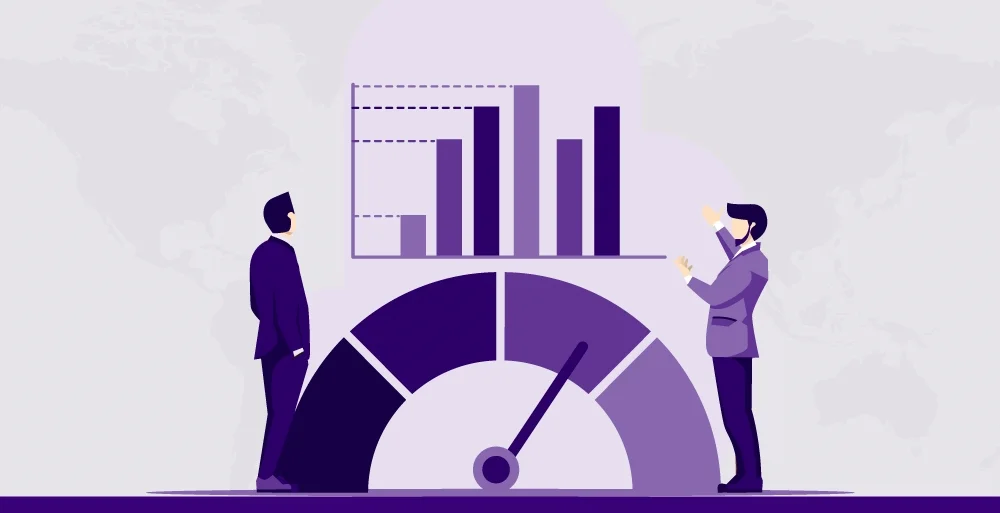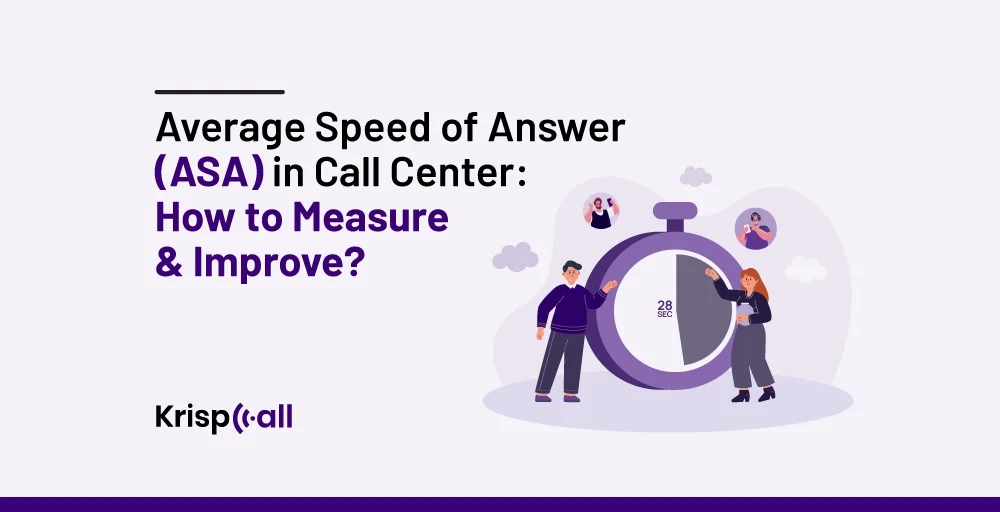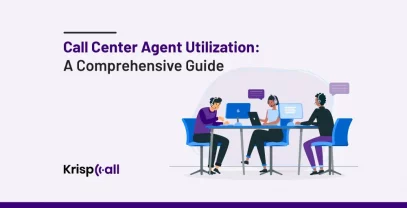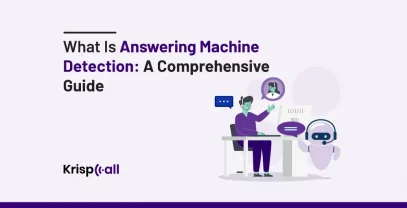Have you ever intentionally missed calls in the call center due to the high volume of calls and insufficient agents? ☎️
Missing a business call means losing opportunities, abandoned calls, and frustrated or dissatisfied customers. The success of the call center depends on how fast agents respond to the customer’s calls and solve their inquiries.
The average speed of answer (ASA) is one of the key call center metrics you need to pay attention to if you are a supervisor or customer support representative. It represents the average time taken by agents to answer a call from a caller, i.e., a customer. A good ASA can enhance customer satisfaction and operational efficiency.
In this blog, we’ll explore the concept of the Average Speed of Answer, how to measure it and, more importantly, how to improve it.
Let’s get started.
🔑 KEY HIGHLIGHTS
- The average speed of answer (ASA) is 28 seconds as per industry standards/ benchmark.
- ASA includes the time the agent spends answering the call, excluding the time spent routing the customer into the queue or IVR.
- To calculate the average speed of the answer, divide the total waiting time for answered calls by the total number of answered calls.
- To improve the average speed of answer in a call center, you should leverage an innovative IVR system, utilize technology, implement a queue callback option, maintain adequate staff, optimize workforce management, provide
What is the Average Speed of Answer (ASA)?
Average Speed of Answer (ASA) is the time it takes for an agent to answer a call from the moment a customer enters the queue until an agent actually answers the call. However, it does not include time spent routing a customer into a queue or interacting with an IVR.
Essentially, it measures how swiftly your team connects with customers when they need assistance the most. The typical average speed of answer is 28 seconds as per industry standards. A lower ASA in a call center indicates more efficiency and increases customer satisfaction as callers (customers) do not keep waiting.
Benefits of Having a Low Average Speed of Answer in Call Center
Having a low average speed of answer is good for call centers because it reflects that your agents are answering calls quickly and dealing with customers’ issues effectively without leaving them in a queue.
Here are some benefits of having a low average speed of answer in a call center:
- Customer satisfaction: A low ASA means customers get a chance to speak quickly with agents and clear their queries and problems. When customers don’t have to wait a long time to answer their calls, it improves the experience and leads to higher customer satisfaction.
- Reduced abandonment rates: A low average speed of answer (ASA) is essential to improving abandonment rates. When call center agents swiftly answer calls and resolve inquiries, customers are less likely to abandon their calls out of frustration. This proactive approach directly enhances customer satisfaction.
- Customer retention: Low ASA indicates a quick response by agents, which can increase the customer’s satisfaction and build loyalty. Customer prefers those who value their time and offer quick service.
- Reduced costs: Low Average Speed of Answer indicates there are sufficient agents to handle incoming phone calls. It reduces the cost that call centers need to bear to sort out the long waiting queues.
- Improve agent performance: A low ASA reduces the waiting time, and customers won’t get frustrated when they don’t have to wait. As a result, agents don’t need to deal with frustrated customers, which significantly increases their efficiency and performance. By working towards a low ASA, you are directly contributing to the success of your team.
- Competitive advantage: A Low ASA helps a call center gain a competitive advantage in the market by providing excellent customer service. This allows call centers to offer quick and stable customer services that attract and retain more customers than higher ASAs. Your efforts in maintaining a low Average Speed of Answer are instrumental in the success of your call center in the competitive market.
How to Measure Average Speed of Answer (ASA) in Call Center?
Average Speed of Answer is measured by dividing the total waiting time for all answered calls by the number of answered calls within a specific period.
Average Speed of Answer Formula
Average Speed of Answer (ASA) = Total Waiting Time for Answered Calls/Total Number of Answered Calls
Example
Suppose a (ABC) call center received 200 calls in an hour. The total waiting time for all answered calls during that hour was 5,000 seconds.
Here’s how to calculate the average speed of answer in a call center in this case:
We have,
Total Waiting Time for Answered Calls = 5,000 seconds
Total Number of Answered Calls = 200
This means the average answer speed for that hour is 25 seconds. It represents the ASA of ABC call center is good as per standard benchmark.
What is a Good ASA for a Call Center?
Generally, a good ASA call score for a call center ranges between 20 and 30 seconds. It is accepted by various industries and considered optimal for meeting both customer satisfaction and consistent operation success.
- Customer satisfaction: In a call center, an average speed of answer of below 20 seconds is considered ideal for maintaining high customer satisfaction levels. Customers expect quick responses and are more likely to be satisfied if their calls are answered immediately.
- Operations: In terms of operation, an average speed of answer of 20 to 30 seconds is considered an effective industry for balancing customer demands with call center resources. Average speed of answer between 20 and 30 seconds ensures that the call center has sufficient staff to handle call volumes without causing long wait times.
How to Improve Average Speed of Answer?

A low average speed of answer is necessary because it enhances customer satisfaction, increases agent performance, reduces cost, retains customers, and competes in a competitive market.
We can improve the average speed of answer in the following ways:
1. Leverage Innovative IVR Systems
Using an innovative IVR (Interactive Voice Response) system can improve the average speed of answers in a call center. This helps forward calls to the most suitable and available agents or departments.
An advanced and innovative IVR system addresses client requests better and offers fast and precise call direction. It decreases wait times and connects customers to the appropriate department or agents, allowing for quicker issue resolution.
2. Utilize Technology
Utilizing a technology can improve both agent’s and customer’s experiences. Adopt an advanced call center software that offers real-time monitoring, call queue management, and detailed analytics features to improve operations and ASA in the call center.
These features provide real-time data on call volume and agent performance and help optimize call center workforce management, call routing systems, and service levels to maintain a low average speed of answer.
3. Implement Queue Callback Option
Implementing queue callback options allows the caller (customer) to request a callback rather than waiting on hold for a long time. It offers the caller the option of receiving a callback after the agent becomes free and available.
Queue callbacks in a call center can improve average speed of answer by decreasing the actual time customers wait to speak with an agent. It saves time for customers and reduces the frustration of waiting on hold.
4. Maintain Adequate Staffs
Maintaining adequate staff in a call center is essential to keep a low average speed of answer. Call centers should forecast the call volumes based on past data and adjust staffing levels to handle the calls quickly.
Besides this, the call center should increase the number of agents to align with a forecasted call volume and maintain a shorter waiting time for customers. This ensures the call center has enough staff to handle incoming call volumes during peak hours or seasons.
4. Optimize Workforce Management
Optimizing workforce management helps to improve the average speed of answers in a call center. This includes scheduling, time tracking, performance management, and agent training, which can affect the ASA.
To boost ASA and call center efficiency, it’s crucial to schedule agents appropriately, provide them with relevant training to handle call volumes effectively, and continuously motivate them to deliver prompt customer service. These factors collectively influence how quickly agents can handle incoming calls, directly impacting ASA.
6. Provide a Multi-channel Option
Call centers should provide alternative multiple-channel options to customers, such as chat, emails, text messages (SMS), self-service, video, and more. Offering such multi-channel options for customer support helps customers communicate through their preferred channels.
Call volumes automatically reduce when customers use different methods to interact with and solve issues with call centers. The available agents will be adequate to handle calls effectively, decreasing an average speed of answer.
7. Enhance Agent Training
Conduct training and development programs to improve the average speed of answers in a call center. Well-trained agents with the necessary skills and knowledge can handle large call volumes and solve a customer’s issues.
Train agents to handle common customer queries, like shipping and return policies. This preparation ensures agents can provide quick solutions, leading to faster response times and higher rates of resolving issues on the first call. This approach reduces customer wait times and enhances overall service quality.
Conclusion
The Average Speed of Answer in a call center directly reflects how quickly agents respond to customer calls. Monitoring and improving ASA are critical for enhancing overall efficiency and customer satisfaction. A low ASA signifies prompt issue resolution and efficient service delivery.
Call centers with a low average speed of answer can significantly benefit from improved customer experiences, higher retention rates, enhanced agent performance, and streamlined operations. To achieve a low ASA, call centers can leverage innovative IVR systems, adopt advanced technology solutions, maintain optimal staffing levels, and invest in continuous agent training.
Implementing these strategies not only meets industry-standard ASAs but also elevates overall customer satisfaction. A good ASA ensures a smooth operation and superior customer experience in a call center.





